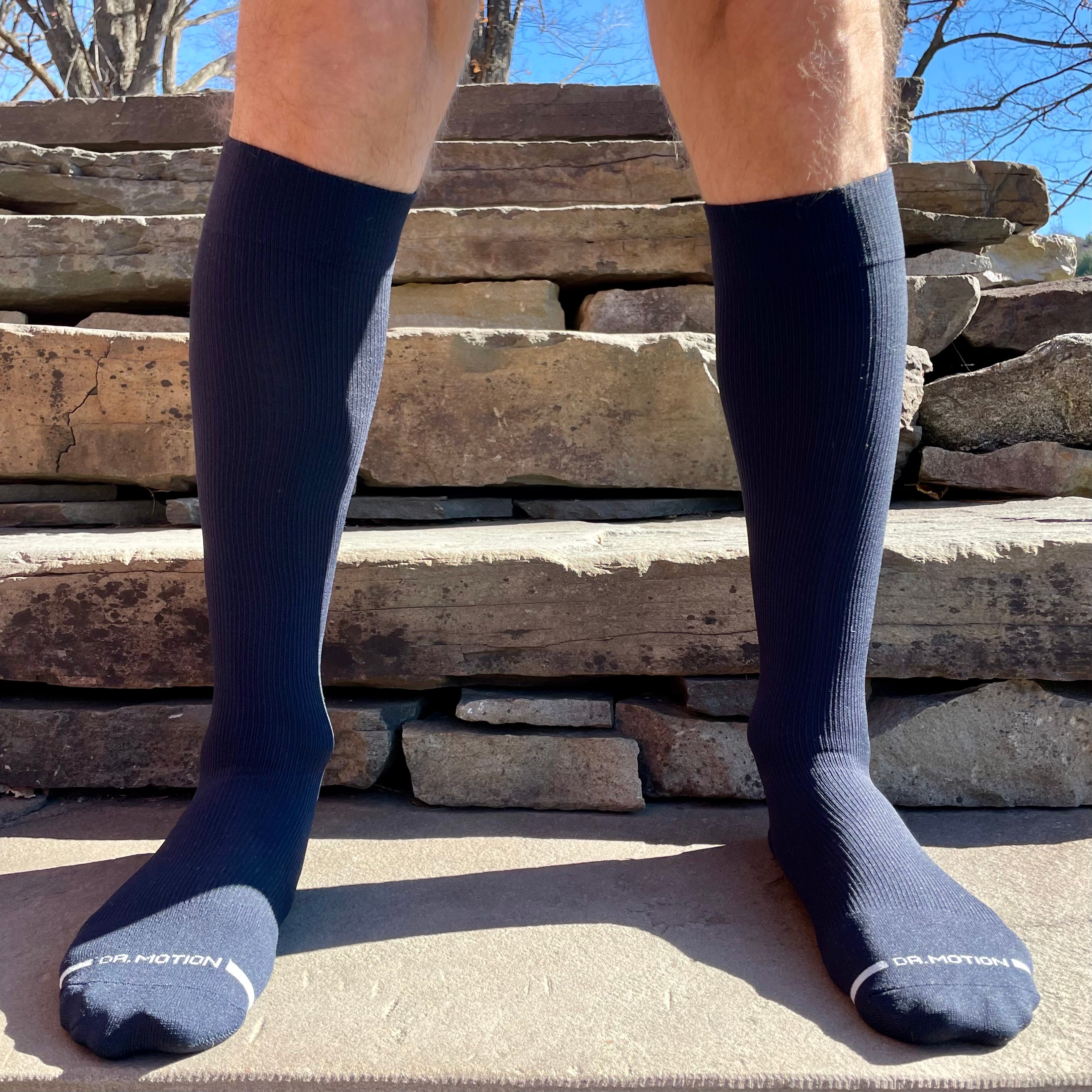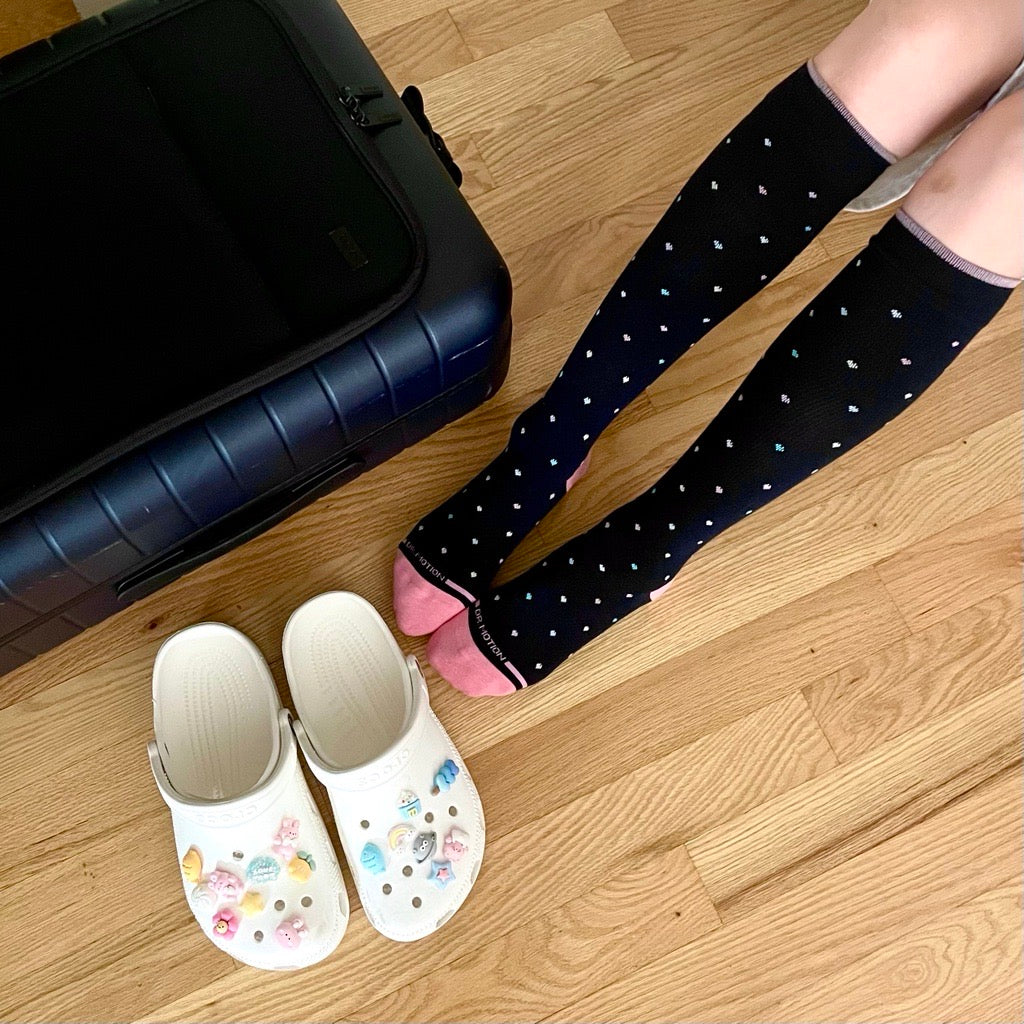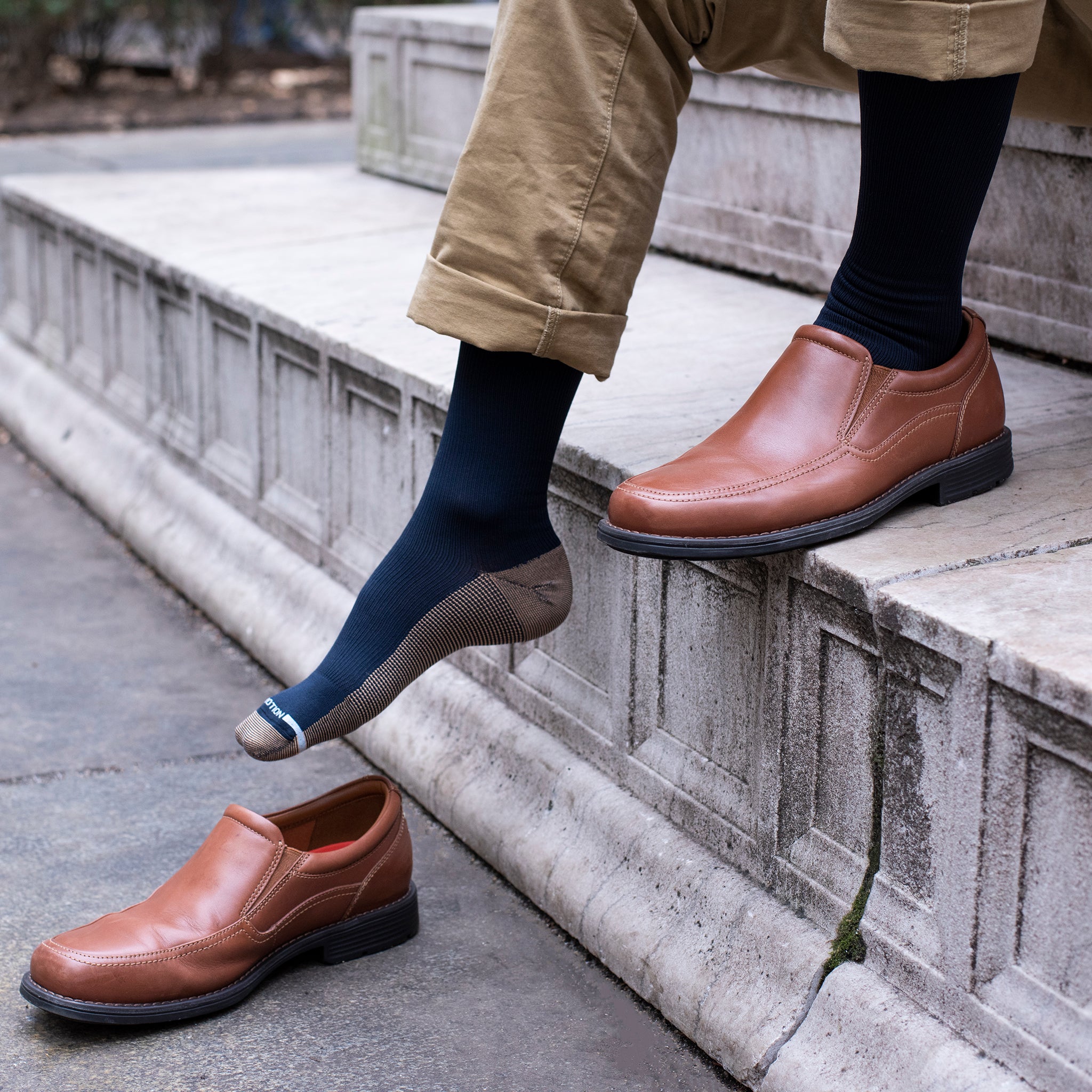Compression Socks & Cellulitis: What You Need to Know?
Many people wonder whether compression socks, long trusted for improving circulation and easing swelling, can also play a role in recovering from cellulitis. It’s a fair question. Compression therapy is widely used for conditions involving fluid retention in the legs, and since cellulitis often leaves behind swelling, it’s natural to ask if these socks might help.
Cellulitis itself is a bacterial skin infection, most often affecting the lower legs. It causes redness, swelling, warmth, and tenderness, and it can be serious if left untreated. Because swelling and lingering inflammation are central issues during and after cellulitis, compression therapy frequently enters the conversation. In this article, we’ll explore the link between cellulitis and compression socks, answer the key questions people ask, and share safe and best practices for anyone considering them.
Cellulitis Explained: Key Facts You Should Know
Cellulitis is an infection that affects the deep layers of the skin and soft tissue. It often starts when bacteria, typically Streptococcus or Staphylococcus, enter through a cut, insect bite, or wound. The condition is most common in the lower legs and is characterized by redness, warmth, swelling, and tenderness. Left untreated, cellulitis can spread rapidly and lead to severe complications, including bloodstream infections.
Risk factors include chronic swelling (edema), skin conditions like eczema, weakened immunity, and poor circulation. Because swelling can persist even after the infection clears, doctors sometimes recommend compression therapy to aid recovery and prevent recurrence. This is where compression socks for cellulitis may come into consideration.
Compression Socks & Cellulitis: The Core Questions
Before reaching for a pair of socks, let’s clarify the most pressing concerns people have about cellulitis and compression therapy.
-
Can You Wear Compression Socks with Cellulitis?
It is not recommended to wear compression socks during active cellulitis unless instructed by your doctor. This is because the skin is already inflamed and tender, and applying external pressure can aggravate discomfort or even interfere with treatment. This is why the query “Can I wear compression socks with cellulitis?” must always be answered with caution. Only a healthcare provider can decide if it’s appropriate during the acute stage.
-
Do Compression Socks Help Cellulitis (Post-Infection)?
Once the infection has been treated with antibiotics and the skin has healed, compression socks can play a valuable role. They reduce lingering swelling, improve blood flow, and support lymphatic drainage. In fact, randomized trials have demonstrated that in patients with chronic leg edema, adding compression therapy significantly lowers the risk of cellulitis recurrence. Rates dropped from approximately 40% (education-only group) to just 15% (compression plus education group) at six months.
One reliable summary highlights that compression therapy resulted in a substantially lower incidence of recurrent cellulitis compared to conservative treatment. So, if you’ve ever wondered, “Do compression socks help with cellulitis?”, the answer is yes. However, cellulitis is not something you can manage on your own. It requires proper diagnosis and antibiotic treatment, and compression socks should be considered only after recovery begins, specifically in individuals with chronic swelling, and always under medical guidance.
-
When Should Compression Socks Be Avoided?
There are specific scenarios when compression therapy is not suitable. If you have severe peripheral arterial disease, critical limb ischemia, untreated heart failure, or any open wounds, compression should be avoided.
Best Practices for Wearing Compression Socks After Cellulitis
When your doctor clears you to use compression, following best practices will help you get the maximum benefit while protecting your skin.
-
Wait Until the Infection Resolves: Always complete your antibiotic course and ensure the redness and pain have subsided before introducing compression.
-
Start Gradually: Begin with a few hours a day to allow your skin and legs to adjust to the pressure.
-
Elevate Alongside Compression: Pair compression therapy with leg elevation to reduce fluid retention more effectively.
-
Use Primarily During the Day: Wear compression socks while awake and mobile. Most people remove them at night. However, in rare cases (such as severe lymphedema), a doctor may recommend specialized nighttime garments.
-
Prioritize Skin Care: Moisturize daily to prevent dryness or cracking, which can increase infection risk.
By following these principles, you can use compression socks for cellulitis safely and comfortably during recovery.
Choosing the Best Compression Socks for Cellulitis Recovery
The right pair of socks can make a significant difference. Here’s how to choose wisely.
-
Compression Level
Mild compression (8–15 mmHg) is often a starting point, with higher levels (15–20 mmHg) considered if swelling is significant. You can explore our full range of mild and moderate options in different designs on this site.
-
Material Matters
Choose breathable, moisture-wicking fabrics (commonly medical-grade synthetic blends).
Our socks feature anti-microbial and anti-odor materials, designed to keep skin healthy and fresh.
-
Length Options
Knee-high compression socks are the most common for leg cellulitis, but thigh-high or full tights may be recommended for more extensive swelling.
-
Fit & Measurement
Accurate sizing is crucial. Ill-fitting socks can cut into the skin or fail to provide proper support. Measure your calf and ankle carefully before making a purchase.
-
Style & Comfort
Wellness doesn’t have to be boring. Today’s compression therapy market includes both functional and stylish options.
How to Know When It’s Time for Medical Support?
Compression therapy is supportive, but cellulitis itself is a medical emergency in many cases. Seek immediate care if you experience:
-
Rapidly Spreading Redness: If the redness expands quickly, it may indicate worsening infection.
-
Severe Pain or Tenderness: Pain out of proportion to appearance can be a warning sign of deeper tissue involvement.
-
High Fever or Chills: Systemic symptoms suggest the infection is spreading.
-
Recurring Episodes: If cellulitis recurs, further evaluation is necessary to identify underlying causes, such as poor circulation or chronic edema.
The question “Will compression socks help cellulitis?” must never replace urgent medical attention when symptoms worsen.
Final Thoughts: Prioritizing Safety Above All
Compression therapy can be a valuable partner in the journey of recovery from cellulitis. Once the infection has been treated and the healing process begins, the right compression socks can bring relief, restore balance, and reduce the risk of swelling returning.
With thoughtful attention to fabric, fit, and style, our compression socks not only support your health but also bring comfort and confidence to everyday life. Chosen wisely, compression socks evolve into a lifestyle rooted in wellness and sophistication.
Disclaimer: This article provides information solely for educational purposes, including but not limited to text, graphics, images, and other materials contained herein. This article is not intended to substitute for professional medical advice, diagnosis, or treatment. Always seek the advice of your physician or another qualified healthcare provider with any questions you may have regarding a medical condition.












